Christmas Feast: Macaroni and Cheese
My wife Kimberly and I, as two bird-obsessed people, may not celebrate the holidays in quite the same ways that an average couple would. This year we’ll go on Christmas Bird Counts and get together with birding friends, as well as family members, before we leave to chase birds in Central America. Two years ago, we hardly celebrated at all, because we were so preoccupied with getting ready to go to the Antarctic.
On five trips to the Antarctic and on trips to South America, New Zealand, and Australia, I’ve seen most of the world’s penguin species multiple times, but I still can’t resist photographing them at every opportunity. They are just so insanely photogenic. Eco-travel photo contests are always replete with images of cute, stereotypical Adelie Penguins, or colorful, majestic King Penguins.
But in this post I want to focus on one of the neglected members of the family: that foppish bad boy, the Macaroni Penguin. The Macaroni belongs to the group of crested penguins, genus Eudyptes. The most famous of these is the Rockhopper Penguin, the most widespread of the species, made famous in nature films from the Falkland Islands (Islas Malvinas). Rockhoppers nest on many island groups, mostly in temperate waters outside the Antarctic zone.
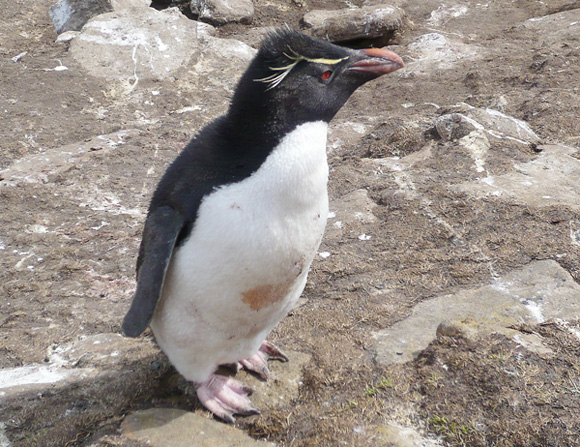
A Rockhopper Penguin on Saunders Island in the Falklands, exhausted from hopping on rocks. Photo by Kenn and Kimberly Kaufman.
Four other species of crested penguins are found mainly around New Zealand and islands just to the south of there. The remaining species, Macaroni Penguin, is the only one of the group that extends deep into the Antarctic region. Some of its largest colonies are on South Georgia Island, far out in the wild South Atlantic and just below the Antarctic Convergence. Kimberly and I took the photos in this post at South Georgia, at the colony at Cooper Bay, in January 2009.
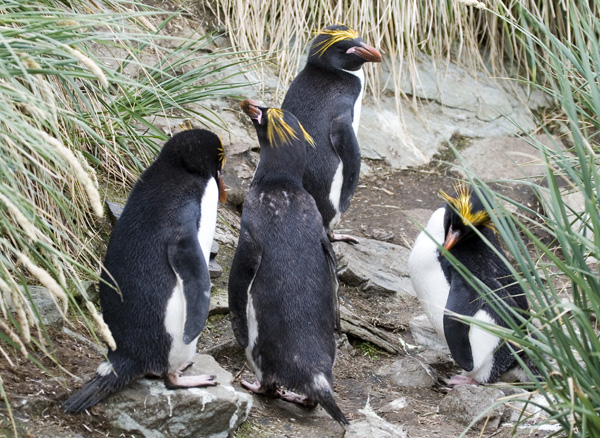
Macaroni Penguins trekking through the tussock grass at Cooper Bay. Photo by Kenn and Kimberly Kaufman.
The slopes at Cooper Bay are covered with dense tussock grass, except where the penguins have flattened and wiped out the grass with their dense nesting colonies. It’s apparently a lot of work to be a Macaroni Penguin: they clamber far up the slopes, farther than would seem really necessary, to establish their colony sites.
One distinctly odd trait of the crested penguins, including the Macaroni, is that they typically lay two eggs – but the first egg is distinctly smaller, it may not hatch at all, and even if it does hatch, the smaller young almost never survives. No advantage to being the first-born in this family!
Studies have indicated that Macaroni Penguin is probably the most abundant member of the family, with a population of perhaps nine million pairs. But most of its largest colonies are away from the sites commonly visited by nature tours, so the suggestion that this is the most numerous penguin is an astonishing idea to most traveling birders.
Finally – why the name? At one time, “macaroni” was a slang term for an overly stylish dresser, a fop, a dandy. (Consider the line in the song “Yankee Doodle,” in which the title character “stuck a feather in his cap and called it macaroni.”) The decorative beak and floppy yellow crest apparently made an impression on whoever came up with the monicker for this species. Still, the name has led to an endless round of jokes about how the crest really looks more like spaghetti, or how the Macaroni Penguin is smiling at the camera and saying, “Cheese!”

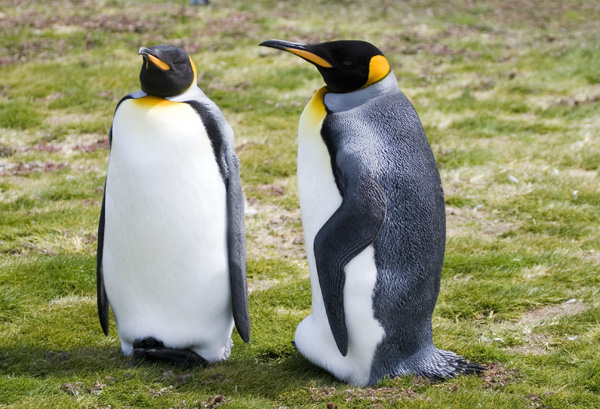
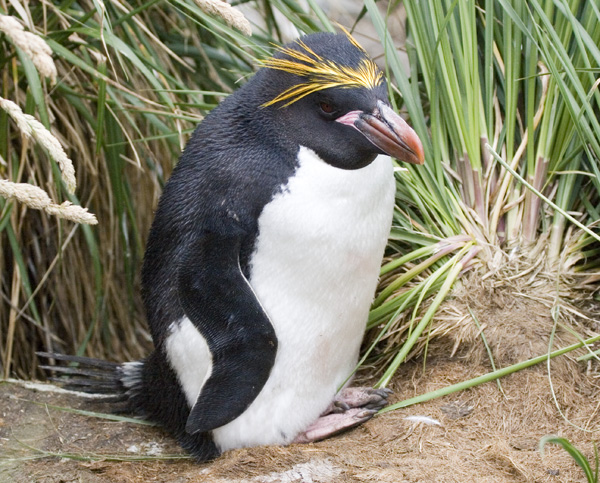
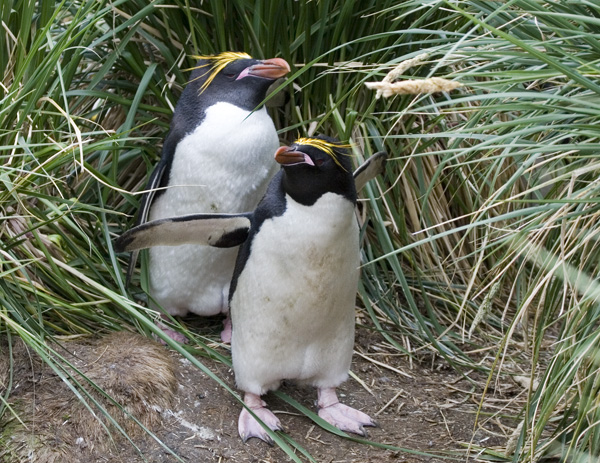
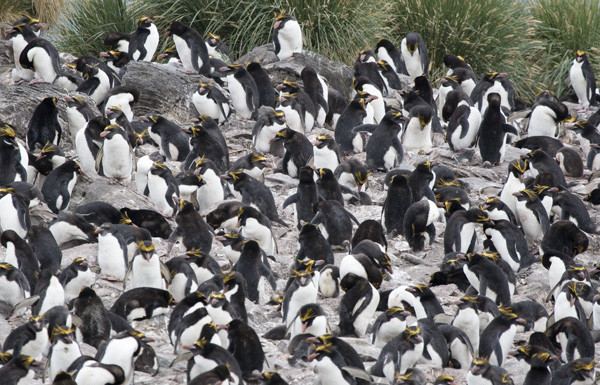
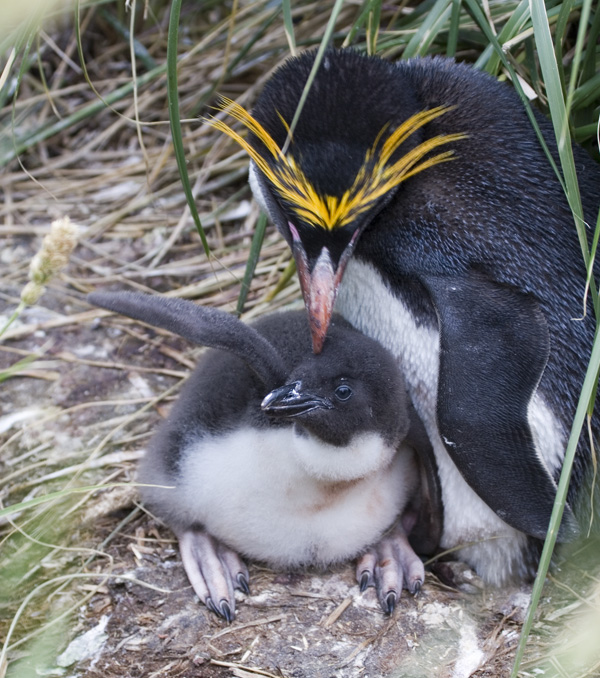
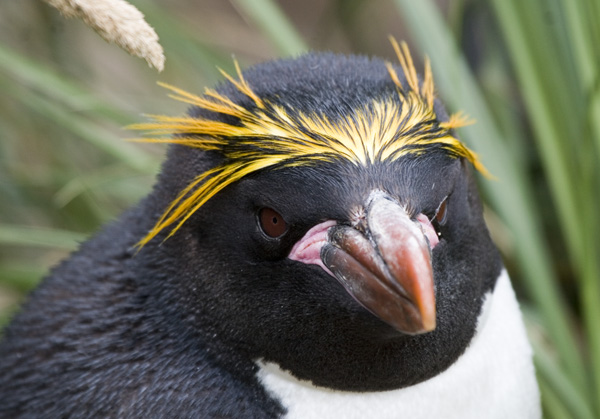
my penguin list needs some work; as yet only seen the african penguin, but I really liked those. wanted to see a macaroni since i was a child
Great post and images Kenn! Would love to see any Penguin! I hope I get Macaroni and cheese one Christmas!